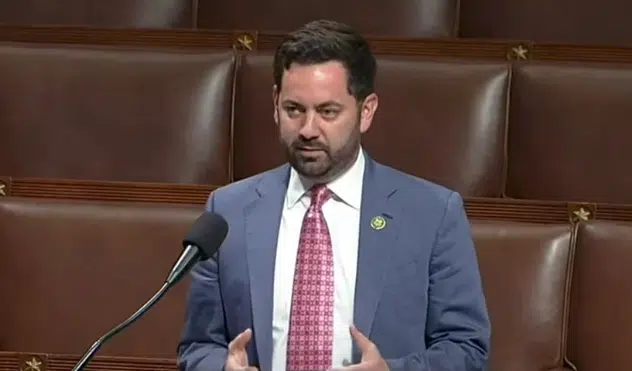By Paul Driessen –
America is running out of natural gas. Prices will soar, making imported liquefied natural gas (LNG) and T Boone Pickens’ wind farm plan practical, affordable and inevitable. That was then.
Barely two years later, America (and the world) are tapping vast, previously undreamed-of energy riches – as drillers discover how to produce gas from shale, coal and tight sandstone formations, at reasonable cost. They do it by pumping a water, sand and proprietary chemical mixture into rocks under very high pressure, fracturing or “fracking” the formations, and keeping the cracks open, to yield trapped methane.
Within a year, US recoverable shale gas reserves alone rose from 340 trillion cubic feet to 823 tcf, the Energy Department estimates. That’s 36 years’ worth, based on what the USA currently consumes from all gas sources, or the equivalent of 74 years’ of current annual US oil production. The reserves span the continent, from Barnett shale in Texas to Marcellus shale in Eastern and Mid-Atlantic states – to large deposits in western Canada, Colorado, North Dakota, Montana and other states (and around the world).
Instead of importing gas, the United States could become an exporter. The gas can move seamlessly into existing pipeline systems, to fuel homes, factories and electrical generators, serve as a petrochemical feedstock, and replace oil in many applications. States, private citizens and the federal government could reap billions in lease bonuses, rents, royalties and taxes. Millions of high-paying jobs could be “created or saved.” Plentiful gas can also provide essential backup power for wind turbines.
Production of this much gas would reduce oil price shocks and dependence on oil imports from the likes of Gadhafi and Chavez, while lowering greenhouse gas emissions. Talk about a game changer!
What’s not to like? Plenty, it turns out. The bountiful new supplies make environmentalist dogmas passé: the end of the hydrocarbon era, America as an energy pauper, immutable Club of Rome doctrines of sustainability and imminent resource depletion, the Pickens’ Plan and forests of wind turbines.
What to do? Environmentalists voiced alarm. HBO aired “Gasland,” a slick propaganda film about alleged impacts of fracking on groundwater. Its claims have been roundly debunked (for instance, methane igniting at a water faucet came from a gas deposit encountered by the homeowner’s water well – not from a fracking operation). A politically motivated Oscar was predicted, but didn’t happen.
The Environmental Protection Agency revealed a multiple personality disorder. Its Drinking Water Protection Division director told Congress there is not a single documented instance of polluted groundwater due to fracking. (Studies by Colorado and Texas regulators drew the same conclusion.)
EPA’s Texas office nevertheless insisted that Range Resources was “endangering” a public aquifer and ordered the company to stop drilling immediately and provide clean water to area homes. EPA officials then failed to show up at the hearing or submit a single page of testimony, to support their claims.
Meanwhile, EPA Administrator Lisa Jackson announced plans to conduct a “life-cycle” or “cradle-to-grave” study of hydraulic fracturing drilling and gas production techniques, to assess possible impacts on groundwater and other ecological values. Depending on whether the study is scientific or politicized, it could lead to national, state-by-state or even city-by-city drilling delays, bans – or booms.
The industry and many states that have long experience with drilling and are confident the needed regulations, practices and testing procedures are already in place. They voice few worries, except over how long a life-cycle study could take or how political it might become. In fact, it’s a very useful tool.
But if a life-cycle study is warranted for hydraulic fracturing, because drilling might pass through subsurface formations containing fresh water, similar studies are certainly called for elsewhere: wind turbine manufacturing, installation and operation, for instance.
Turbines require enormous quantities of concrete, steel, copper, fiberglass and rare earth minerals – all of which involve substantial resource extraction, refining, smelting, manufacturing and shipping. Land and habitat impacts, rock removal and pulverizing, solid waste disposal, burning fossil fuels, air and water pollution, and carbon dioxide emissions occur on large scales during every step of the process.
Over 95% of global rare earth production occurs in China and Mongolia, using their technology, coal-fired electricity generation facilities and environmental rules. Extracting neodymium, praseodymium and other rare earths for wind turbine magnets and rotors involves pumping acid down boreholes, to dissolve and retrieve the minerals. Other acids, chemicals and high heat further process the materials. Millions of tons of toxic waste are generated annually and sent to enormous ponds, rimmed by earthen dams.
Leaks, seepage and noxious air emissions have killed trees, grasses, crops and cattle, polluted lakes and streams, and given thousands of people respiratory and intestinal problems, osteoporosis and cancer.
In 2009, China produced 150,000 tons of rare earth metals – and over 15,000,000 tons of waste. To double current global installed wind capacity, and produce rare earths for photovoltaic solar panels and hybrid and electric cars, China will have to increase those totals significantly – unless Molycorp and other companies can rejuvenate rare earth production in the US and elsewhere, using more modern methods.
Made in China turbines are shipped to the USA, trucked to their final destinations, and installed on huge concrete platforms; new backup gas generating plants are built; and hundreds of miles of new transmission lines are constructed. That means still more steel, copper, concrete, fuel and land. Moreover, the backup power plants generate more pollution and carbon dioxide than if they could simply run at full capacity, because as backups for turbines they must operate constantly but ramp up to full power, and back down, numerous times daily, in response to shifting wind speeds.
Wind farms require roads and 700-1000 ton concrete-and-rebar foundations, which affect water drainage patterns in farm country. The 300-500 foot tall turbines affect scenery, interfere with or prevent crop dusting over hundreds of acres, and kill countless birds and bats. Farmers who lease their land for wind turbines receive substantial royalty payments; neighbors are impacted, but receive no compensation.
Despite these ecological costs, wind farm projects are often fast-tracked through NEPA and other environmental review processes, and are exempted from endangered species and migratory bird laws that can result in multi-million-dollar fines for oil, gas and coal operators, for a fraction of the carnage.
Perhaps worst, all this is supported generously by renewable energy mandates, tax breaks, feed-in tariffs, “prioritized loading orders,” and other subsidies, courtesy of state and federal governments and taxpayers. In fact, wind power gets 90 times more in federal subsidies than do coal and natural gas, per megawatt-hour of electricity actually generated, according to US Energy Information Administration data. And wind-based electricity costs consumers several times more per kilowatt-hour than far more reliable electricity from coal, gas and nuclear power plants.
Simply put, the wind might be free, when it blows. But the rest of the “renewable, green, eco-friendly” wind energy system is anything but.
It might be far better all around to simply build the most efficient, lowest-polluting coal, gas and nuclear generating plants possible, let them run at full capacity 24/7/365 – and just skip the wind power.
Life-cycle studies would be a positive development – for all energy sources. In fact …
“Think globally, act locally” might be a very good motto for EPA and wind energy advocates.
Paul Driessen is senior policy advisor for the Committee For A Constructive Tomorrow and Congress of Racial Equality, and author of Eco-Imperialism: Green power – Black death.






